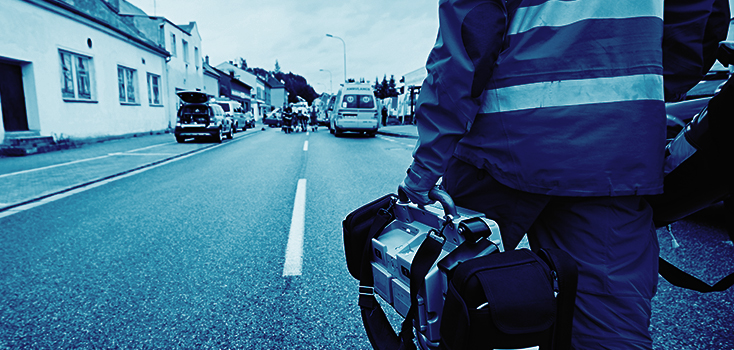
The advancement of paramedic technology
The job of a paramedic is hard and involves many different tasks. Novel technology regarding transport, support and life saving measures is already tested in the United states. This could also be ground-breaking for Europe in the future.
Paramedics usually work in pairs – one is driving, the other is administering the patients. In general, the patient should be cared for already before the transport. However, different cases occur where more than a helping hand is needed and one paramedic is then simply not enough.
One of these cases is CPR, where a paramedic must provide chest compressions, administer an IV, monitor critical statistics about a patient’s well-being, and in addition has to provide a number of other live saving care procedures. So far, the solo paramedic would usually be left to do chest compressions until arrival at the nearest hospital, sometimes for lengths near an hour. Technology has now introduced new methods and equipment that helps not only those who are afflicted, but to ease the job of those administering the care. Equipment like the LUCAS (Lund University Cardiopulmonary Assist System) allows one or two responders to act as three and can therefore help the paramedics at across the country save lives every day.
Other equipment that proves to be work enhancing every day includes novel transport technology like Liquid-ride ambulances, which allow for the raising or lowering of ride height, making it easier to move patients in and out of the vehicles. Another addition are hydraulic equipped stretchers, that allow for patients far larger than those transporting them to be easily maneuvered. This also saves paramedics from straining and possibly injuring themselves as well.
In addition to already well established equipment, much technology is still in the developing phase – One piece of technology that may soon be used by paramedics is a video-laryngoscope, which is used for indirect tracheal intubation in difficult airway situations. It improves the task of tracheal intubation – allowing oxygen into a patient’s system– but is also equipped with a camera screen on the device to allow for a constant view of a patients trachea, making intubation easier and safer.
Nevertheless, it needs to be mentioned, that although technological advances have made it easier for paramedics to do their job, it’s clear that there is no substitute for the human intuition. It is clear that technology will play a bigger role in the future to help people, but at the end of the day the most important part is still the paramedic and their ability to personally help the people who call them.
Technology in medicine has changed a lot in recent years. The changes have made the devices smaller and allowed for the transfer of data and information in practical new ways. In addition to that, the EMS technology is an ever-changing market: As technology in other sectors like military and entertainment improve, the trickle-down effect can lead to new and innovative devices that will allow those in the paramedic field as well. Even though the process is here a bit slower, this could eventually affect the way how the EMS services in Europe are handled.
References
[1] NortheastNow (2019): Life saving technology; the advancement of paramedic care. URL at: https://northeastnow.com/2019/06/10/life-saving-technology-the-advancement-of-paramedic-care/

